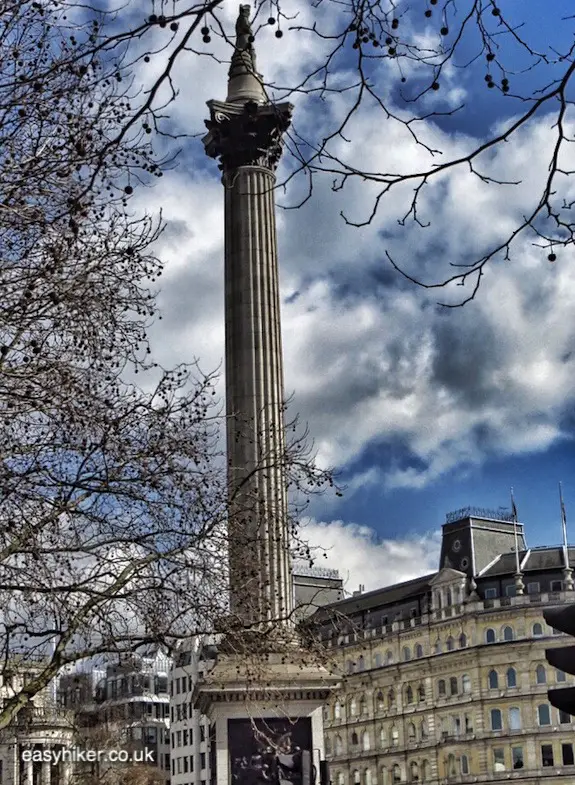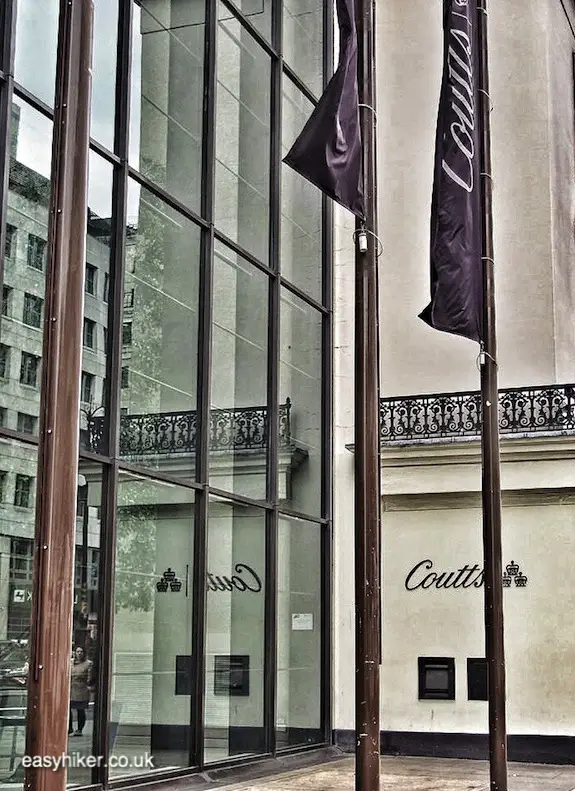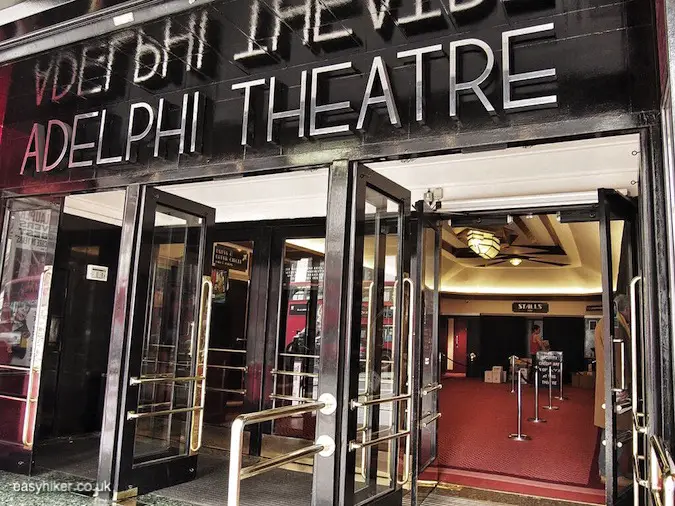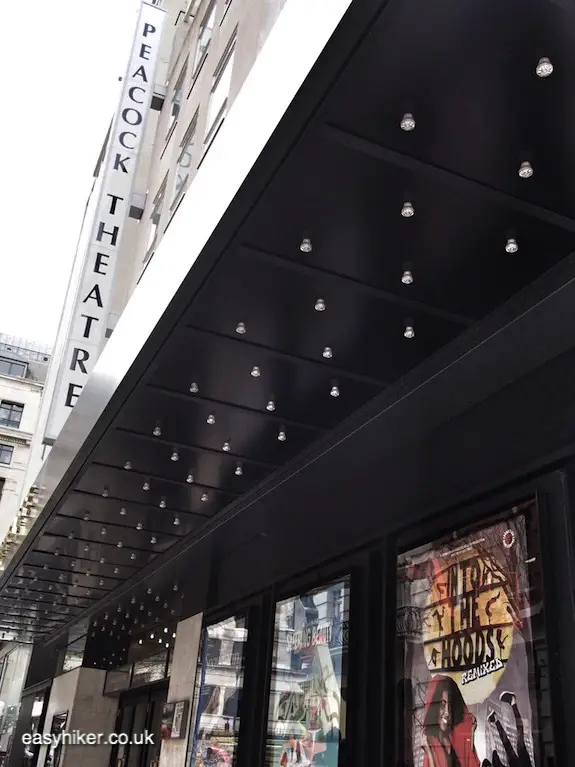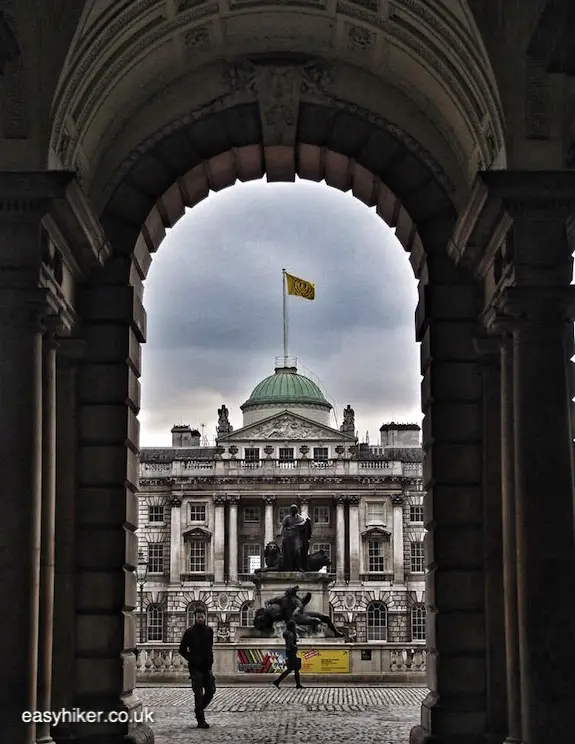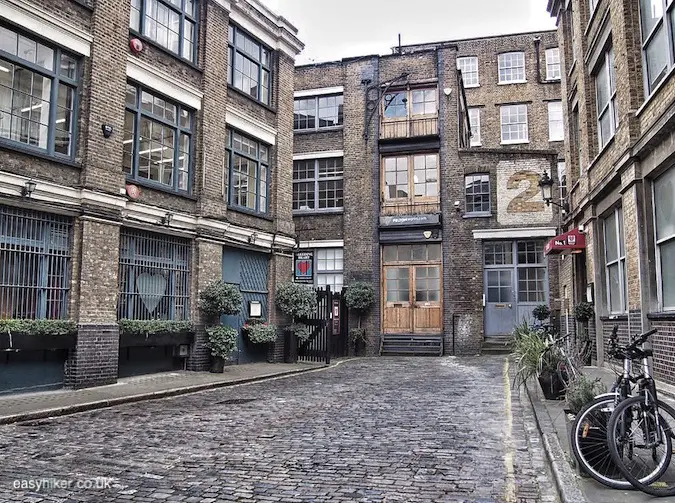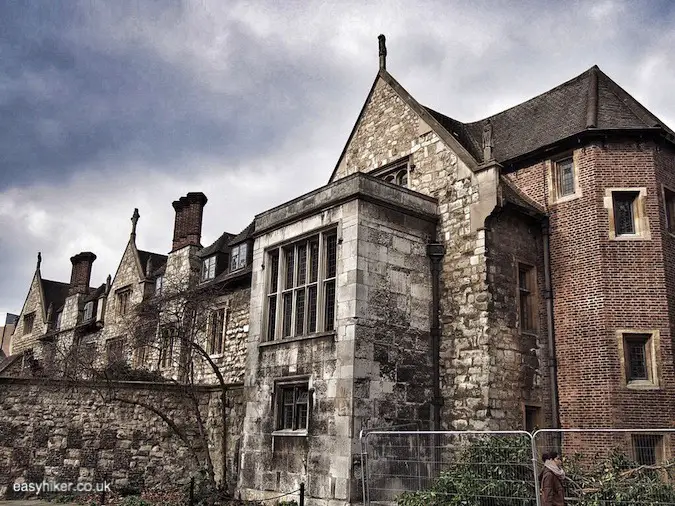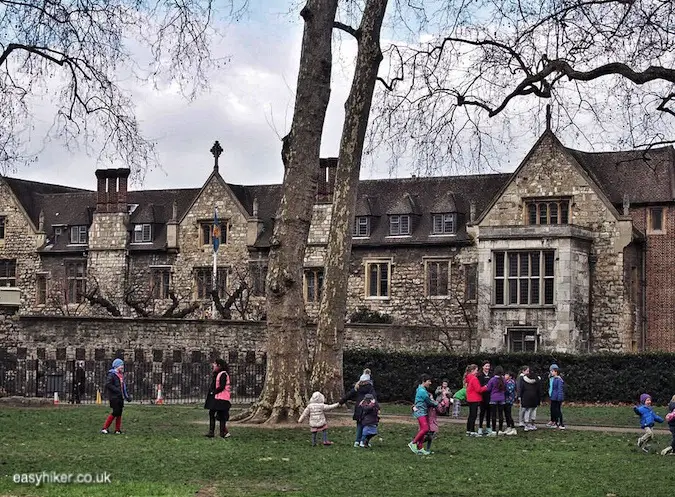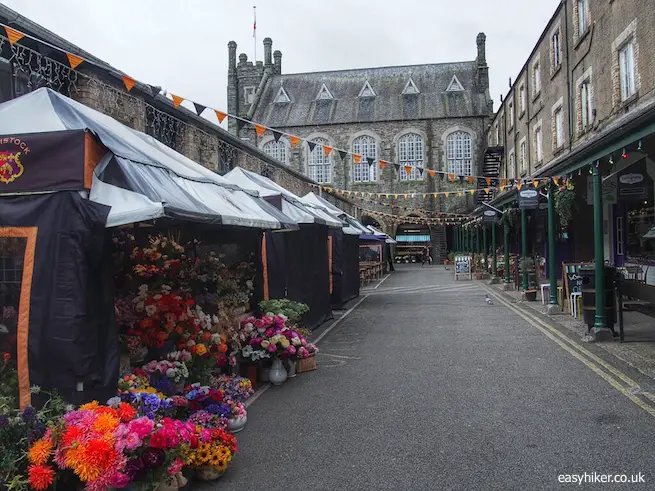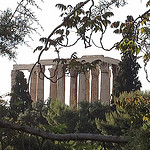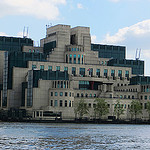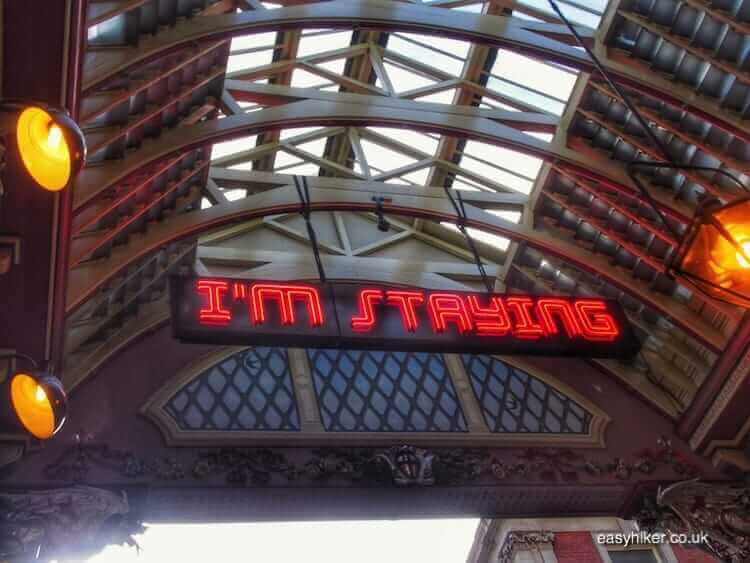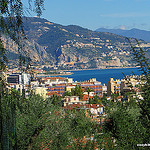Ready to meet more of London’s undead?
Good, they have been dying to meet you – in some cases waiting for you for hundreds of years in the haunted City of London.
Brave enough for the Haunted City of London?
We start the second part of our walk on Trafalgar Square, right underneath Nelson’s Column. Take a good look at the Admiral so you can recognize him when we meet his ghost a little further down our route.
But we begin by walking down the Strand (towards your right when you are facing the National Gallery).
One of the first buildings you will see on the left side of the street is the head office of Coutts, which is London’s most famous private bank – mainly because it deals with the finances of England’s most famous person, the Queen.
Coutts is haunted by the ghost of the Duke of Norfolk who was beheaded near-by after a plot to unseat another Queen, the first Elizabeth, and to become Prince Regent after marrying her cousin Mary Stuart.
For centuries, the Duke only put in the occasional appearance, but for some reason, he became very restless about 30 years ago. Complaints of spooky encounters by staff in the bank’s computer room increased to such an extent that Coutts eventually called in a medium to resolve matters.
The medium not only managed to contact the ghost but even to cut a deal: the Duke, so he indicated, would give up scaring secretaries if a belated burial mass was held in a neighbouring Catholic church (Corpus Christi in Covent Garden) that was attended by his entire family – which is exactly what happened, and since then there have been no more apparitions. (The current Duke consented although he later confessed that he did not actually believe in ghosts.)
A few hundred meters further down the Strand in haunted City of London, you will find the Adelphi Theatre …
… where the actor William Terriss was stabbed to death in December 1897 by another actor.
Terriss died in his lover’s arms – an actress who appeared in the same show and with whom the assassin had madly fallen in love – promising her that this would not be the last of him, and he has been true to his word ever since, roaming the theatre (mainly the women’s dressing rooms, it is said) but also the streets outside where he has been seen as far away as Covent Garden tube station.
The current theatre may look modern, it was built in 1930, but it is the 4th Adelphi Theatre in this place since 1806. In the late 19th century, the Adelphi was mainly famous for stage adaptations of Charles Dickens stories.
This is probably as good a place as any to point out that most London theatres are haunted or, at the very least, claim to be.
Particularly among the older theatres, it almost seems to be a question of pride to “boast of a ghost”. Still, the next haunted theatre on our list is a special case – with a unique type of ghost.
The Peacock on Portugal Street, a side street of Kingsway (on your left hand side behind Aldwych) may be a new building (constructed in 1960) in a largely modern-looking environment, but there has been a theatre in this place since the 1660s – 350 years during which the place acquired a fairly chequered theatrical history as an operatic stage, a cinema and a TV studio.
Today, the Peacock is the experimental stage of England’s foremost ballet venue, which pretty much represents its artistic zenith, while the nadir was reached in the 1970s when the theatre was used as a venue for revues of, well, a certain kind.
One of these revues, called The Great International Nude Show, featured an act that included two dolphins. The animals were kept permanently in a tank beneath the stage, because that was cheaper than to rehouse them between performances.
In the dark and musty cellars of the theatre, the dolphins soon became unhappy and morose, and one of them eventually died, “from neglect” it is said. The remnants of the tank and the hydraulic equipment still remain below the stage, and numerous visitors to the theatre claim to have heard the plaintive cry of a dolphin in distress, “not unlike a crying baby”.
Return to the Strand where, on the corner with Waterloo Bridge, you will see a huge array of neoclassical buildings collectively called Somerset House.
The ghost of Lord Nelson has been seen here many times, striding across the interior piazza towards his former office. (The entire complex was once occupied by the Admiralty, but in recent times – until 2000 – by the tax inspectors from the Inland Revenue. I know many people who would prefer to meet an undead Lord Nelson than one of those guys.)
Nothing in the world of spectral appearances beats a famous name, and here is another one: Oliver Cromwell.
In order to meet him, walk further down the Strand, a little past the Royal Courts of Justice, until you spot – on the right hand side –a rather ancient looking house (no. 229-230 which was built in 1625, the only building in this part of town that survived the Great Fire of London in 1666).
The house later became famous as the home of the Wig and Pen, one of London’s legendary journalists’ pubs.
In the 17th century, this was where the officer lived who supervised the ceremonial entrance into the City of London. The hippogriff marks the spot.
On the spikes of this gate, the severed head of Lord Protector Cromwell was once displayed (having been sawed off his corpse following the restoration of the monarchy), and it is said that Cromwell returns to the house to demand the return of his head. Angrily, so they say, and quite noisily, too. (Not a man to mess with, apparently, in life or in death.)
Turn left into Fetter Lane and walk straight across the large intersection into Hatton Gardens before turning right into Greville Street. (Opposite, at 88-90 Hatton Gardens, you may spot the building of Safe Deposit Ltd., site of the largest burglary in the history of the world with an estimated loot of up to 200 million pounds, much of which – it is suspected – undeclared cash and precious metals of uncertain origin. If you listen closely, you can hear the wailing and the gnashing of teeth of certain circles within London’s oligarchy.)
From Greville Street, turn right into a narrow lane called Bleeding Heart Yard …
… which was named in memory of Lady Elizabeth Hatton who was found in this very spot in January 1626, “torn limb from limb”, as a contemporary report rather graphically describes, “but her heart still pumping blood.”
Legend has it that Lady Hatton had made a pact with the devil (these things never turn out well, do they) to secure a favourable marriage (the family once owned much of the area around), wealth and a house in central London.
During the housewarming party, the devil came, presumably to ask her to fulfill her part of the bargain, and when she laughed in his face, he … well, I think you can make out the rest. (And yes, Mrs. Hatton does occasionally return, mainly in cold winter nights around the anniversary of her death, when a “mad laughter” can be heard echoing around the yard.)
Further down Greville Street – passing Saffron Hill on our left, haunted by the ghost of Fagin who ran his Boys’ Academy here (according to Charles Dickens’s Oliver Twist) – into Cowcross Street and Charterhouse Street until we arrive at Charterhouse Square – to meet the Duke of Norfolk again, the ghost who haunted Coutts at the beginning of the walk. (It’s a small netherworld after all.)
Here, however, the Duke is only one ghost among many – if you go by quantity alone, Charterhouse Square is easily the most haunted place in Britain.
Before the Duke moved in the old house on the square’s northern side – no, not the Art Deco mansion in the east: that’s the house from the TV series Poirot – this was a monastery whose abbot had been hung, drawn and quartered, with his severed arm nailed to the convent’s gate, after he had refused to accept Henry VIII’s decision to split from Rome.
He then returned on nocturnal visits to urge his fellow monks to remain true to their Catholic faith, once taking the shape of a heavenly flame that lit up all candles in the building in a single stroke – which duly impressed the monks sufficiently to remain steadfast.
The monastery was eventually dissolved, and everybody in it executed. (Henry VIII: another man not to be messed with.)
But the building was already haunted when all this happened: an estimated 35,000 plague victims were buried underneath the lawn of the public garden in 1349.
This was the reason why the monastery was established here in the first place: to pray for the restless souls of so many Londoners.
If, after all of this, you need a drink, I suggest that you turn in the direction of Smithfield Market to Cloth Lane and a public house called the Rising Sun which has been the ruin of many a poor soul.
The pub, it is said, was a meeting place and drinking den for a gang of 19th century body snatchers who stole cadavers from near-by St Barts Hospital to supply dissection material for anatomy researchers who did not ask too many questions.
If for whatever reason their supply ran short they would occasionally resort to murdering patrons of the Rising Sun. A “presence” has been frequently reported since, generally described as “an ice-cold hand that runs down your back”, specifically in the pub’s toilets.
Oh, and they serve rather tasty pies, too. You might as well – to fortify yourself for the final part of our walk when we shall boldly enter the heart of darkness: what was once surely the most terrible place on earth.

